Posts in Category: cognitive science
the interdisciplinary study of cognition and behavior
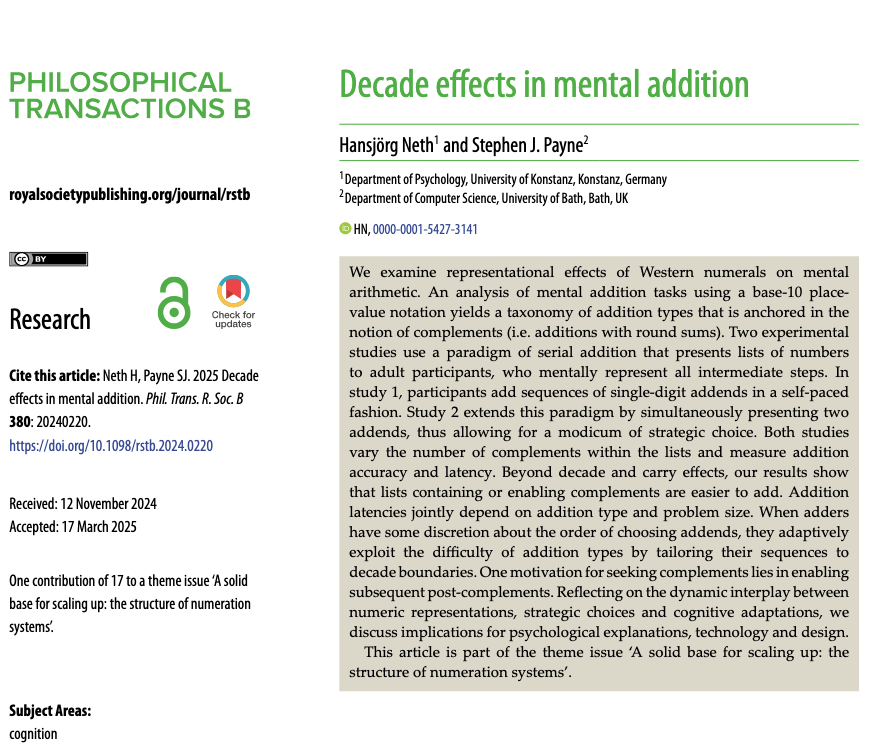
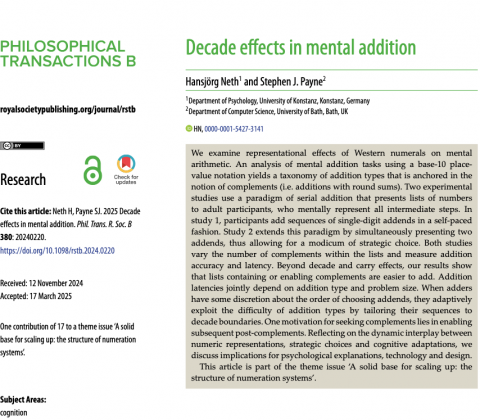
Paper: Decade effects in mental addition
| The most important part of the Analytical Engine was undoubtedly the mechanical method of carrying the tens. (…) The difficulty did not consist so much in the more or less complexity of the contrivance as in the reduction of the time required to effect the carriage. (…) nothing but teaching the Engine to foresee and then to act upon that foresight could ever lead me to the object I desired… |
| Charles S. Babbage (1864), Passages from the Life of a Philosopher, p. 114 |
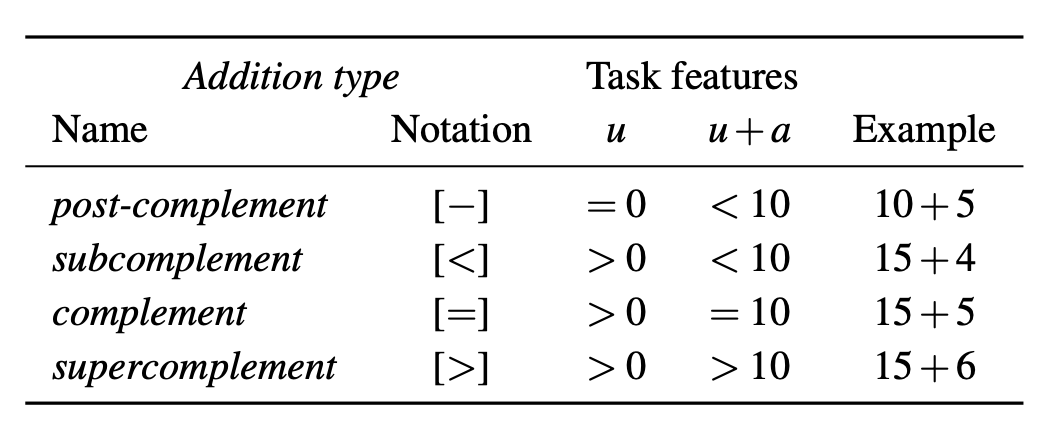
Classification of addition types for adding a single-digit addend a (with a∈{1…9}) to an augend Au (u denoting the augend’s unit). (See Table 1 for details.)
Hansjörg Neth, Stephen J. Payne
Decade effects in mental addition
We examine representational effects of Western numerals on mental arithmetic. An analysis of mental addition tasks using a base-10 place-value notation yields a taxonomy of addition types that is anchored in the notion of complements (i.e. additions with round sums). Two experimental studies use a paradigm of serial addition that presents lists of numbers to adult participants, who mentally represent all intermediate steps. In study 1, participants add sequences of single-digit addends in a self-paced fashion. Study 2 extends this paradigm by simultaneously presenting two addends, thus allowing for a modicum of strategic choice. Both studies vary the number of complements within the lists and measure addition accuracy and latency. Beyond decade and carry effects, our results show that lists containing or enabling complements are easier to add. Addition latencies jointly depend on addition type and problem size. When adders have some discretion about the order of choosing addends, they adaptively exploit the difficulty of addition types by tailoring their sequences to decade boundaries. One motivation for seeking complements lies in enabling subsequent post-complements. Reflecting on the dynamic interplay between numeric representations, strategic choices and cognitive adaptations, we discuss implications for psychological explanations, technology and design.
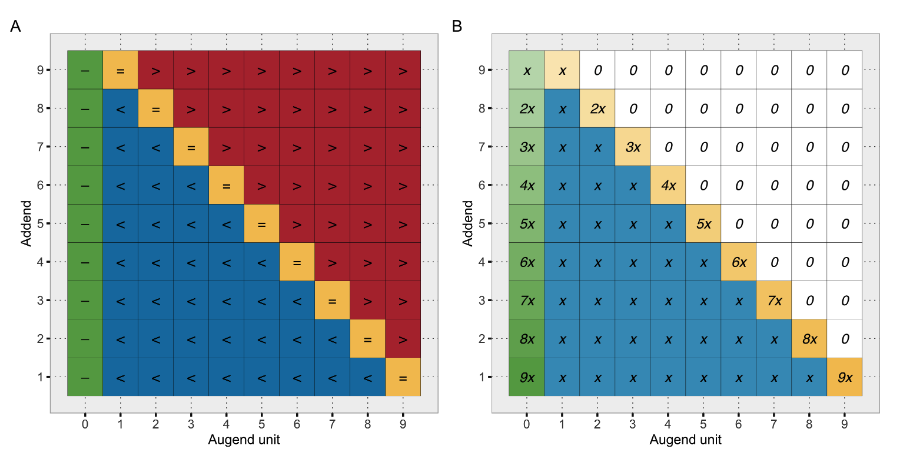
Four different addition types (A) and their hypothetical frequency (B, assuming uniform distribution of addends 1–9 and full decomposition of super-complements). (See Figure 4 in Appendix A1 for details.)
This article is part of the theme issue A solid base for scaling up: the structure of numeration systems.
Keywords: mental arithmetic, addition strategies, base notation, representational effects.
Reference: Neth, H., & Payne, S. J. (2025). Decade effects in mental addition. Philosophical Transactions of the Royal Society B, 380, 20240220. https://doi.org/10.1098/rstb.2024.0220
Related: Addition as interactive problem solving | Thinking by doing? | Immediate interactive behavior (IIB) | Arabic vs. Roman arithmetic | Taxonomy of actions | The cognitive basis of arithmetic | Interactive coin addition | The functional task environment
Resources: open access article | PDF download | Google Scholar


Chapter: How can decision models decide to not decide? Modeling suspension in fast-and-frugal trees (FFTs)
Hansjörg Neth, Jelena Meyer
How can decision models decide to not decide?
Modeling suspension in fast-and-frugal trees (FFTs)
Abstract
The phenomena of indecision and suspension loom large in both philosophy and psychology. Whereas psychology discusses related phenomena in practical tasks and mostly pathological terms, philosophy strives for conceptual clarification and emphasizes the ubiquity and variety of suspension.
In this chapter, we use fast-and-frugal trees (FFTs) as a drosophila model for developing a positive account of suspension in decision-making. Being designed for handling binary classification tasks, FFTs seem particularly ill-suited for accommodating a third stance. But by replacing one decision outcome by a do not know category or adding it as a third option, we can adapt and extend the FFT framework to explore the causes and consequences of suspension.
Considering the distributions of decision outcomes and contrasting the performance of alternative models in terms of cost-benefit trade-offs illustrates the power of this methodology. Overall, a model-based approach provides surprising insights into the functions and mechanisms of suspension and serves as a productive tool for thinking.
Keywords
-
fast-and-frugal trees (FFTs), judgment and decision making (JDM), heuristics, binary classification, cost-benefit trade-offs, indecision, computer modeling, philosophy, machine learning, suspension
Reference
- Neth, H., & Meyer, J. (2025). How can decision models decide to not decide? Modeling suspension in fast-and-frugal trees (FFTs). In V. Wagner & A. Zinke (Eds.), Suspension in epistemology and beyond (pp. 286–303). New York, NY: Routledge.
doi 10.4324/9781003474302-20
Related: FFTrees: An R toolbox to create, visualize, and evaluate FFTs
Resources: 10.4324/9781003474302-20 | Download PDF | Google Scholar
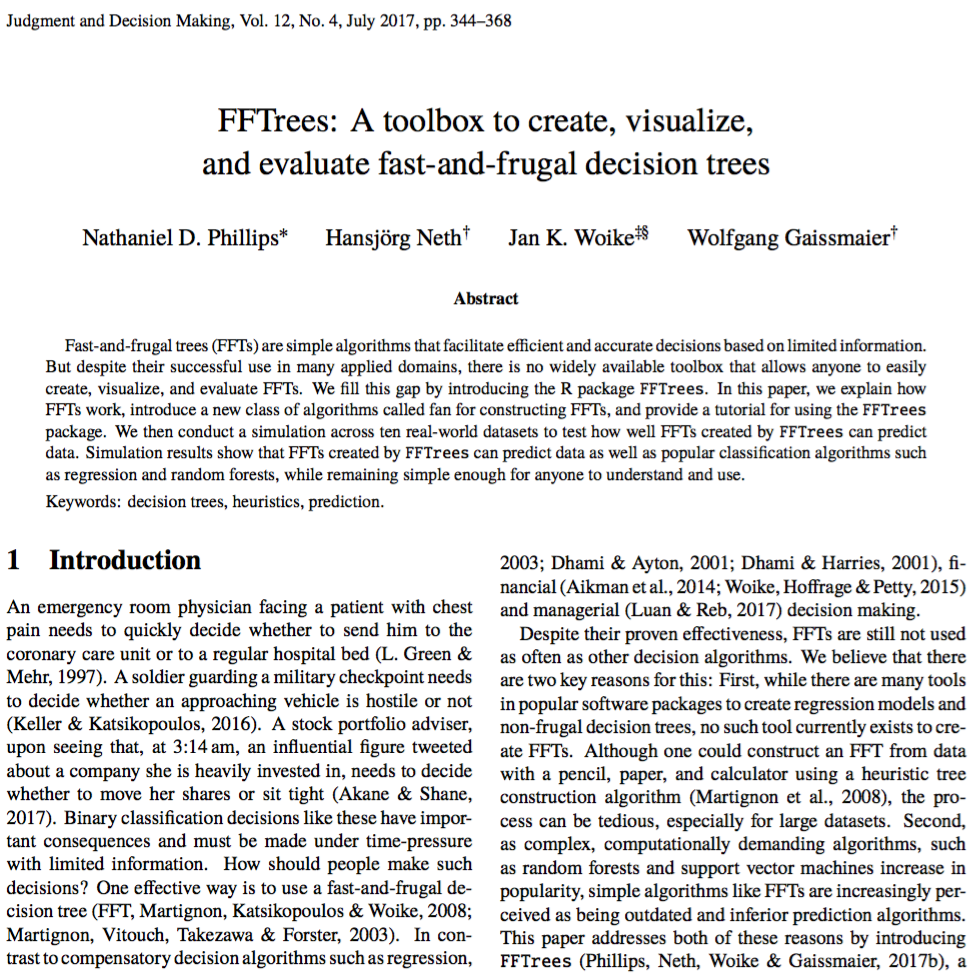
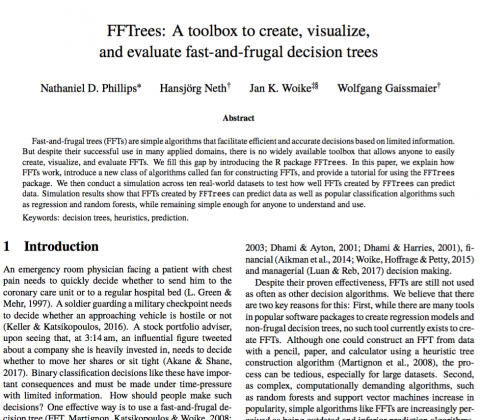
Paper: FFTrees: An R toolbox to create, visualize, and evaluate FFTs
is nevertheless totally incomprehensible to a human expert, can it
be described as knowledge? Under the common-sense definition of this term
as material that might be assimilated and used by human beings, it is not…
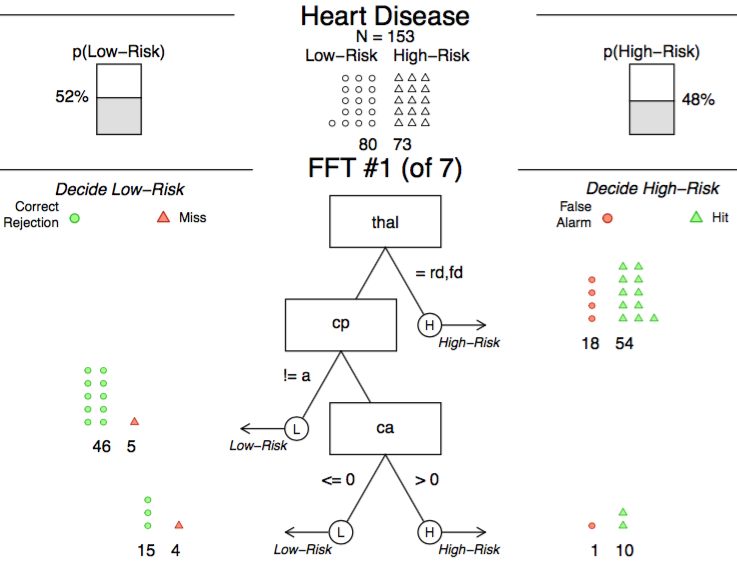
An example of an FFT predicting the risk of having heart disease.
Nathaniel Phillips, Hansjörg Neth, Jan Woike, Wolfgang Gaissmaier
FFTrees: A toolbox to create, visualize, and evaluate fast-and-frugal decision trees
Abstract: Fast-and-frugal trees (FFTs) are simple algorithms that facilitate efficient and accurate decisions based on limited information. But despite their successful use in many applied domains, there is no widely available toolbox that allows anyone to easily create, visualize, and evaluate FFTs. We fill this gap by introducing the R package FFTrees.
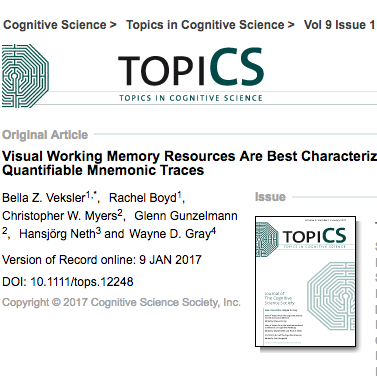

Paper: Visual working memory resources as item activation
Donald D. Hoffmann (1998), p. XII
and those involved in symbol manipulation and the organization of complex behaviors.
Ballard et al. (1997), p. 723
Bella Z. Veksler, Rachel Boyd, Christopher W. Myers, Glenn Gunzelmann, Hansjörg Neth, Wayne D. Gray
Visual working memory resources are best characterized as dynamic, quantifiable mnemonic traces
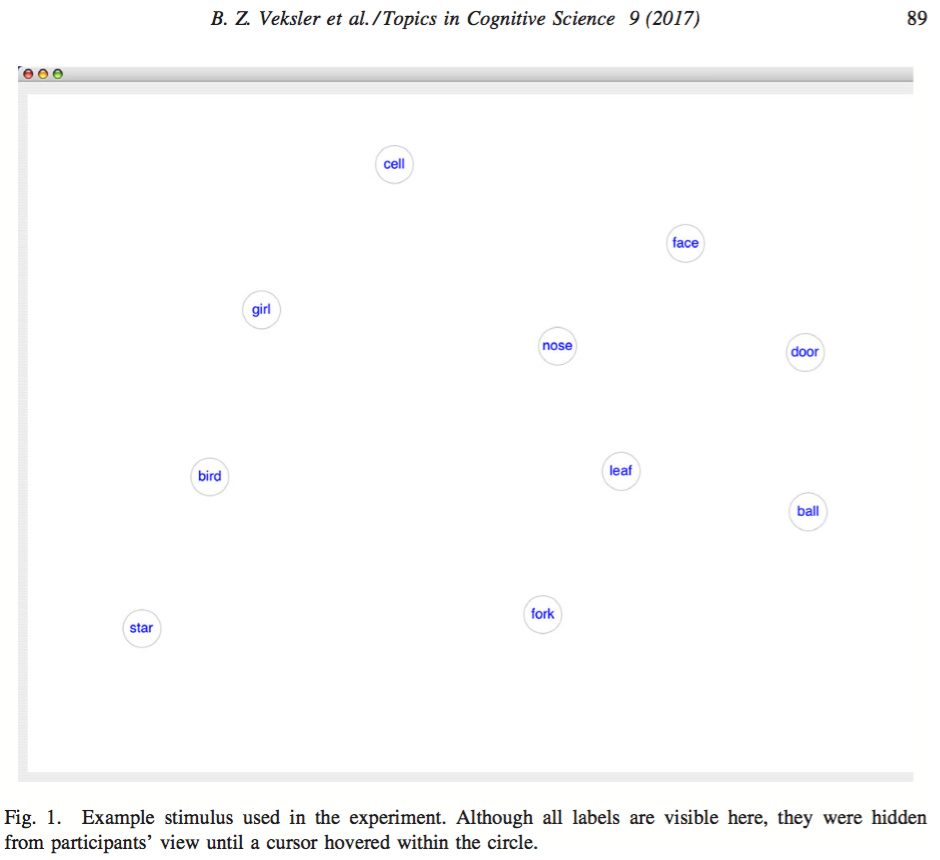
An example stimulus used in the paradigm of repeated serial search.
Abstract: Visual working memory (VWM) is a construct hypothesized to store a small amount of accurate perceptual information that can be brought to bear on a task. Much research concerns the construct’s capacity and the precision of the information stored. Two prominent theories of VWM representation have emerged: slot-based and continuous-resource mechanisms. Prior modeling work suggests that a continuous resource that varies over trials with variable capacity and a potential to make localization errors best accounts for the empirical data. Questions remain regarding the variability in VWM capacity and precision. Using a novel eye-tracking paradigm, we demonstrate that VWM facilitates search and exhibits effects of fixation frequency and recency, particularly for prior targets. Whereas slot-based memory models cannot account for the human data, a novel continuous-resource model does capture the behavioral and eye tracking data, and identifies the relevant resource as item activation.
